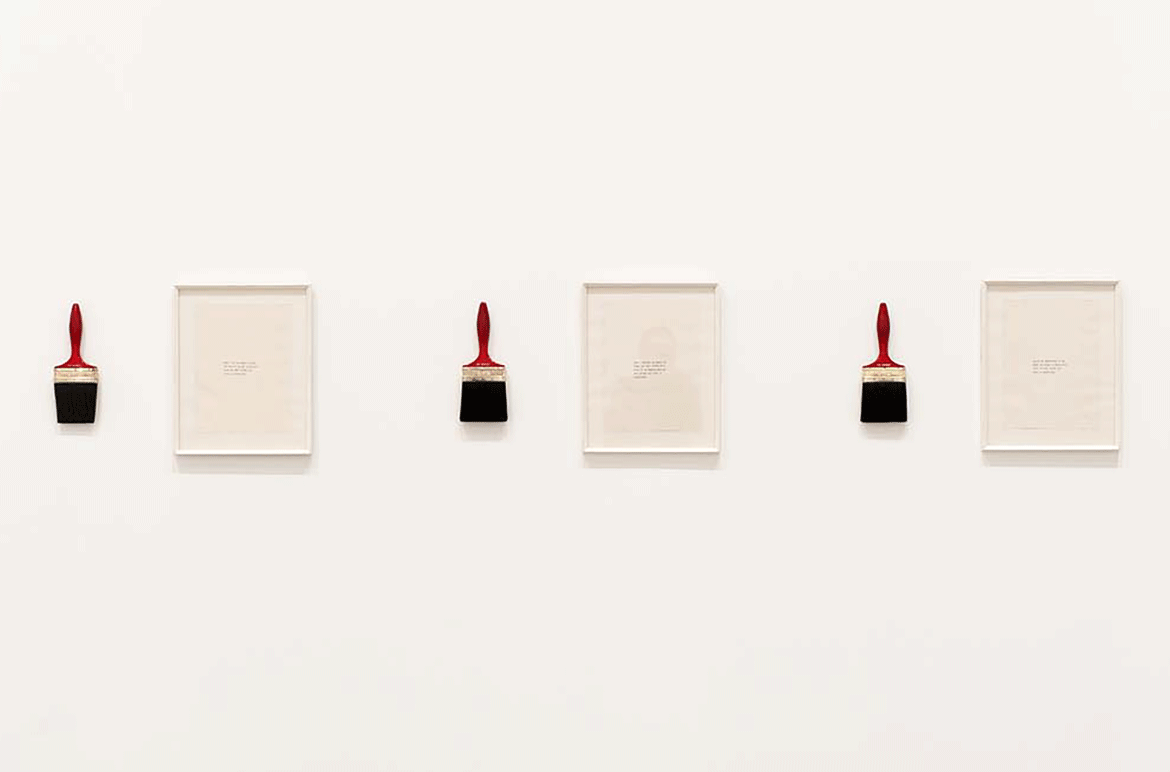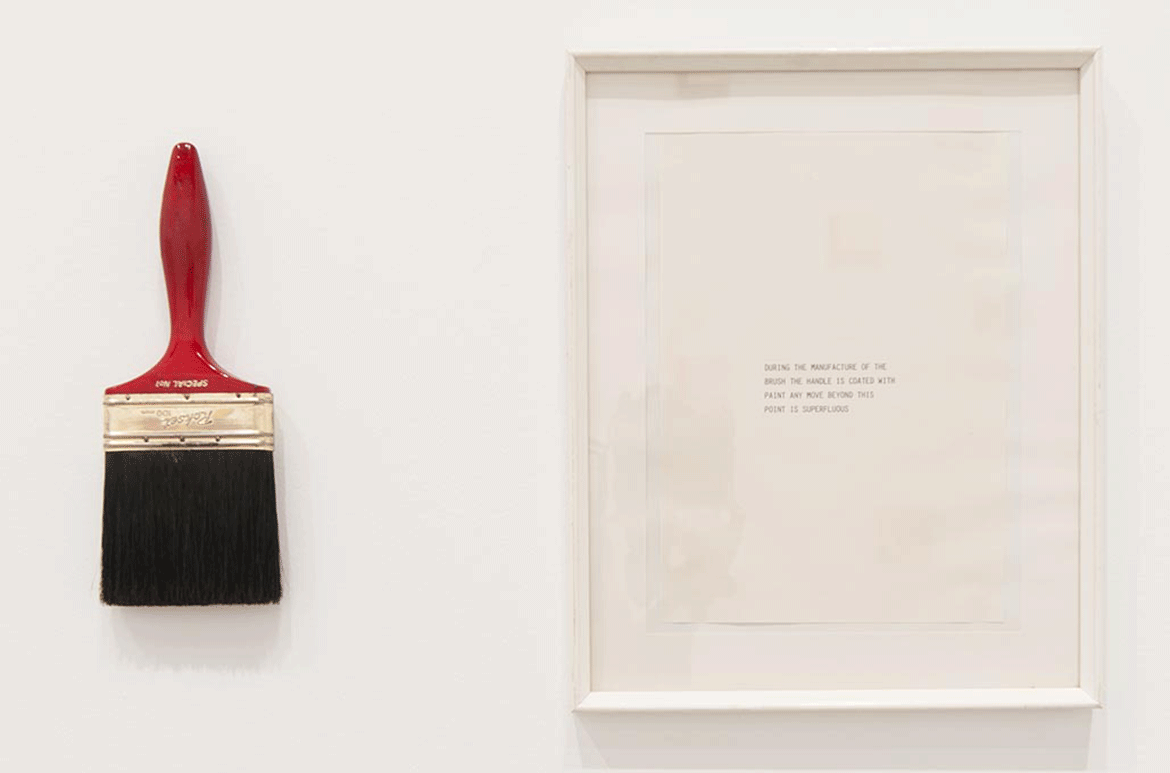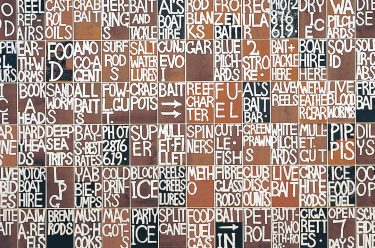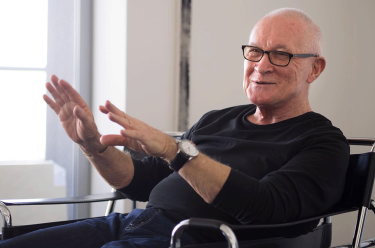The reductive logic that Robert MacPherson applied to his painting practice in the 1970s is applied here to his tool, the standard house painter’s brush. Examining it closely and considering its history, MacPherson traces a backwards path from use, to purchase, to manufacture and sees that the paintbrush is already a painted object. He relinquishes the need to continue using the brush to make a painting. It is enough for him to display a paintbrush as a painting.
WHEN I DIP THE BRUSH IN PAINT
THE BRISTLES BECOME COATED WITH
PAINT ANY MOVE BEYOND THIS
POINT IS SUPERFLUOUS
WHEN I PURCHASE THE BRUSH THE
HANDLE HAS BEEN COVERED WITH
PAINT BY THE MANUFACTURER ANY
MOVE BEYOND THIS IS
SUPERFLUOUS
DURING THE MANUFACTURE OF THE
BRUSH THE HANDLE IS COATED WITH
PAINT ANY MOVE BEYOND THIS
POINT IS SUPERFLUOUS
This realisation helps prompt MacPherson’s withdrawal from painting as an activity of paint application. At the same time, this pairing of object and text will structure much of his subsequent work, as in the Frog Poem series.


Know Brisbane through the QAGOMA Collection / Delve into our Queensland Stories / Read more about Australian Art / Subscribe to QAGOMA YouTube to go behind-the-scenes
‘The Painter’s Reach‘ at the Gallery of Modern Art (GOMA) explored the work of Robert MacPherson and included paintings, installations, ephemera and works on paper, showing how the artist’s reach begins with the particular and extends far beyond.
#QAGOMA

